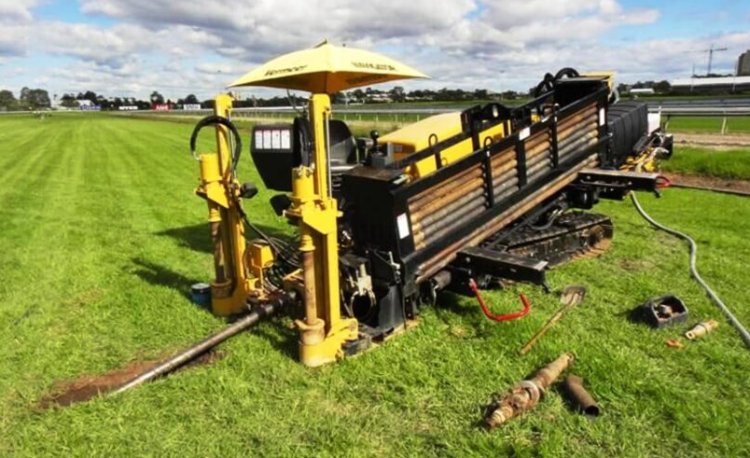Exploring the Benefits of Directional Boring Services for Construction Projects
This technique is increasingly popular in construction projects due to its efficiency, cost-effectiveness, and minimal environmental impact. Let’s dive deeper into what directional boring services entail and the advantages they offer.

Directional boring, also known as horizontal directional drilling (HDD), is a modern method used in underground construction. It allows for the installation of pipelines, cables, and other utilities beneath the ground without disturbing the surface. This technique is increasingly popular in construction projects due to its efficiency, cost-effectiveness, and minimal environmental impact. Let’s dive deeper into what directional boring services entail and the advantages they offer.
What is Directional Boring?
Directional boring is a trenchless method of underground drilling that enables contractors to install pipes, cables, and other utilities beneath roads, rivers, or other obstacles. The process involves drilling a pilot hole at a specific angle, followed by the insertion of a larger reamer to expand the hole to the necessary size for the utility being installed.
Unlike traditional excavation methods, which require large trenches to be dug through the surface, directional boring minimizes disruption to the environment. It is ideal for installing utilities in areas where traditional methods would be costly, time-consuming, or environmentally damaging.
How Does Directional Boring Work?
-
Planning and Surveying: The first step in directional boring is thorough planning and surveying. The location of the boring path is carefully selected based on project requirements and site conditions.
-
Pilot Hole Drilling: A drilling rig is used to bore a small pilot hole horizontally from one entry point to the exit point, avoiding any surface disruption. GPS and sonar are often used to guide the pilot hole and ensure it remains on track.
-
Reaming: Once the pilot hole is drilled, a reamer is pulled back through the hole to enlarge it to the required diameter. The reamer is designed to expand the hole while minimizing the potential for damage to surrounding areas.
-
Utility Installation: After the hole is reamed to the appropriate size, the utility—whether a pipe, cable, or conduit—is pulled through the hole. This method ensures that the utility is safely installed without disrupting traffic, landscaping, or other infrastructure.
Benefits of Directional Boring
1. Minimal Surface Disruption
One of the main advantages of directional boring is that it requires little to no surface disruption. Traditional trenching methods can cause significant damage to roads, sidewalks, landscapes, and existing infrastructure. Directional boring, on the other hand, can install utilities beneath these surfaces without disturbing them, making it an environmentally friendly and less disruptive option.
2. Cost-Effective
While the initial cost of directional boring equipment and services can be higher than traditional methods, the long-term savings are substantial. Because directional boring eliminates the need for extensive excavation and surface restoration, the overall cost of the project can be lower. There is also less risk of costly damage to existing infrastructure.
3. Faster Installation
Directional boring is generally faster than traditional excavation methods. Since there is minimal disruption to the surface, the need for traffic control, permits, or extensive restoration is significantly reduced. This leads to quicker project timelines, especially in urban areas or areas with high foot traffic.
4. Less Environmental Impact
Because there is minimal disturbance to the surface, directional boring reduces the environmental impact of construction projects. This is particularly important in sensitive areas, such as wetlands, waterways, and urban centers, where traditional methods might cause significant environmental damage or disruption.
5. Ideal for Difficult Terrain
Directional boring is highly versatile and can be used in a variety of challenging terrains. It’s particularly useful for crossing rivers, highways, or other obstacles where traditional trenching would be difficult or impossible. This flexibility makes it an excellent choice for a wide range of construction and utility installation projects.
6. Improved Safety
With directional boring, there is less need for large excavation projects, which can pose safety hazards to workers. The reduced need for manual labor on-site and the absence of open trenches lower the risk of accidents, making the project safer for workers and the public.
Applications of Directional Boring
Directional boring is used in a wide variety of applications, including:
- Utility Installation: Installing water, gas, and sewer lines, as well as electrical and telecommunications cables, beneath roads and other structures.
- Pipelines: Directional boring is commonly used to install pipelines for oil, gas, or water, particularly in sensitive or difficult-to-reach locations.
- Communication Lines: Fiber optic cables and other communication lines are often installed using directional boring to avoid surface disruption in urban and suburban areas.
Conclusion
Directional boring services Los Angeles are a game-changer for modern construction projects, offering numerous advantages such as minimal disruption, cost-effectiveness, and reduced environmental impact. As the demand for efficient, sustainable construction practices continues to grow, directional boring is becoming an essential technique for utility installation, infrastructure development, and more. Whether you’re building new infrastructure or upgrading existing utilities, directional boring offers a reliable solution that saves time, money, and effort while preserving the integrity of the environment.
What's Your Reaction?










